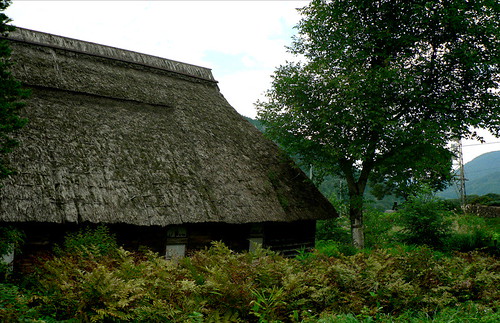|
|
Post by anansi on Nov 7, 2010 9:27:21 GMT -5
Inspired by a conversation over at ES the following is a collage of Pics and vids of Blacks in Asia feel to add your own Jarawa people,Andaman Island India. www.lightstalkers.org/images/show/923621Great pics click link to see more. click here for imageFilipino Devotees Crowd Onto The Streets For Procession Of The Black NazareneMANILA, PHILIPPINES - JANUARY 9: A healer prays at the annual procession of the Feast of the Black Nazarene January 9, 2004 in the Philippine capital Manila. The statue, a dark coloured figure of Jesus Christ that is believed to have miraculous powers, was brought from Mexico to the heavily Roman Catholic Philippines in 1606 and housed in the Saint John the Baptist Church since 1787. www.life.com/image/2854334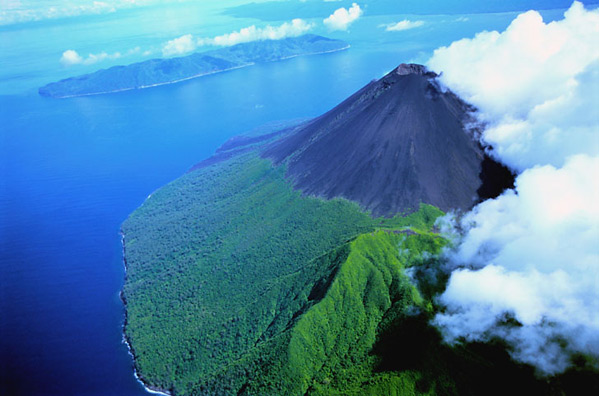 Vanuatu VanuatuVanuatu is an archipelago of 83 islands spread over an area of 332,046 square miles. Of all the 83 islands, the most visited by travelers are Efate and Espiritu Santo. Population is approximately 200,000. History Many of the islands of Vanuatu have been inhabited for thousands of years, the oldest archaeological evidence found dating to 2000 BC. Malaysia 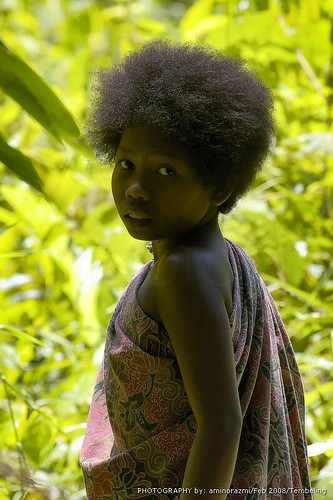 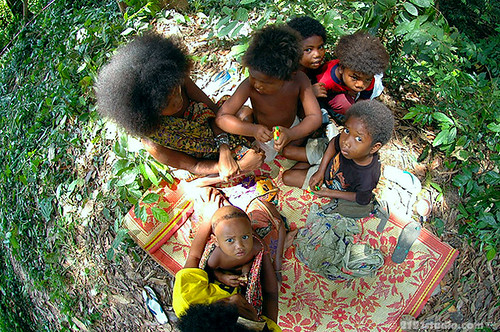  destee.com/forums/showthread.php?t=56580&page=12 destee.com/forums/showthread.php?t=56580&page=12some props to this site^ The Orang Asli are the indigenous minority peoples of Peninsular Malaysia. The name is a Malay term which transliterates as 'original peoples' or 'first peoples.' It is a collective term introduced by anthropologists and administrators for the 18 sub-ethnic groups generally classified for official purposes under Negrito, Senoi and Proto-Malay. They numbered 105,000 in 1997 representing a mere 0.5 per cent of the national population. The Orang Asli, nevertheless, are not a homogeneous group. Each has its own language and culture, and perceives itself as different from the others. Linguistically, some of the northern Orang Asli groups (especially the Senoi and Negrito groups) speak languages - now termed Aslian languages - that suggest a historical link with the indigenous peoples in Burma, Thailand and Indo-China. The members of the Proto-Malay tribes, whose ancestors were believed to have migrated from the Indonesian islands to the south of the peninsula, speak dialects which belong to the same Austronesian family of languages as Malay, with the exceptions of the Semelai and Temoq dialects (which are Austroasiatic). www.magickriver.net/oa.htm
|
|
|
|
Post by anansi on Nov 20, 2010 0:11:34 GMT -5
|
|
|
|
Post by nebsen on Nov 20, 2010 2:20:22 GMT -5
Must be on the same wave length. For just the other day I downloaded this talk by Runoko Rashidi called Fiji~ the African Roots www.youtube.com/watch?v=BJMaPGSO4YYI also really like the music of Fiji ,which I might post on the video section, enjoy  |
|
|
|
Post by nebsen on Nov 20, 2010 3:37:13 GMT -5
www.youtube.com/watch?v=AYhrHwzY_90 Here is some Fiji modern music, I find the singing esp. the harmonizing very spiritual in nature. I have also more traditional music with dance that i also would like to post. I have always been attracted to the Melanesian( Black) people & their culture of the Pacific .
|
|
|
|
Post by anansi on Nov 20, 2010 14:32:48 GMT -5
Must be on the same wave length. For just the other day I downloaded this talk by Runoko Rashidi called Fiji~ the African Roots www.youtube.com/watch?v=BJMaPGSO4YYI also really like the music of Fiji which I might post on the video section, enjoy  Does my Jamaican heart proud that one of the oldest folks in the world can take a reggae beat and make their own with-in their language , Beautiful videos Now I know folk lore can be strong but how does that matches-up with genetics ...mind you it does not means very much to me after-all genetics is genetics and folks lore is fore lore but black folks are black folks with a similar history of oppression and triumph over adversity. |
|
|
|
Post by nebsen on Nov 20, 2010 15:33:36 GMT -5
Anansi, I totally agree with you about the folk lore & genetics argument. I have heard Dr. S.O.Y. Keita make the point that they are Asians not Africans But, I still feel, if we are all Africans under the skin, what doe's it matter. Our brothers & sister who are Melanesian probably have a stronger link with their collective cell memory bank, than most, & must remember that distant past & link to Mother Africa. Like Runoko said,& Proud Of that connection & link ! I have meet brothers from Fiji( cab drivers) who have told me the same thing & consider those of us of the African diaspora, their bothers & sisters, not like a lots of East Indians who have a disdain for people of African descent,( mind you, not all ) You should check out the group" Fiji Experience" You- Tube or Amazon. I have one CD by them. The perfect blend of Reggae, ,& Soul, sung in English, with great Melanesian harmony that I love, & that Island flair for story telling.  |
|
|
|
Post by anansi on Nov 24, 2010 7:58:42 GMT -5
   Diverse Genes Jan. 23, 2008 -- An extensive new study on Pacific Islanders has determined that Polynesians and Micronesians bear little genetic relationship to Melanesians, who turn out to be among the most genetically diverse people on the planet. In addition to revealing how these people are, or aren't, related to each other, the new study, published in the current PLoS Genetics, indicates the origins of the native island inhabitants and how the regions were initially settled. Polynesia includes Hawaii, Easter Island, New Zealand and certain other south central and eastern Pacific islands, while Micronesia refers to small islands, such as Guam, that are in the central Pacific north of the equator. Melanesia includes Fiji, New Guinea, and other islands in the chain north and east of Australia. "The first people to enter the Pacific came from Southeast Asia, along the stepping-stone island chain -- now Indonesia -- to ancient Australia and New Guinea, and to the nearby islands just to the east and southeast, the Bismarcks and the Solomons," lead author Jonathan Friedlaender told Discovery News. "They got there between 50,000 and 30,000 years ago, when Neanderthals were still roaming Europe -- very, very early in modern human prehistory," added Friedlaender, who is professor emeritus of anthropology at Temple University. Melanesia was also settled around this time, probably by individuals from East Asia. Although Melanesians today resemble certain African groups, they turn out to be genetically far removed from Africa. Friedlaender and his international team looked at 800 genetic markers known as microsatellites. Also called "junk DNA," these markers can vary a lot between individuals. One person might have a GAGAGAGA code, for example, while another could just have GAGAGA. "Since they vary a great deal between individuals in how many repeated segments they have, they can tell a great deal about a person's identity and history," Friedlander said, adding that junk DNA is commonly used in forensic cases as a result of its individual uniqueness. The latest genetic data supports a version of what has been called the "fast train hypothesis" concerning Pacific Island settlements. In this scenario, the Polynesians are the train. They traveled everywhere in the Pacific, without leaving much of a genetic finger print. dsc.discovery.com/news/2008/01/23/islanders-zoom.html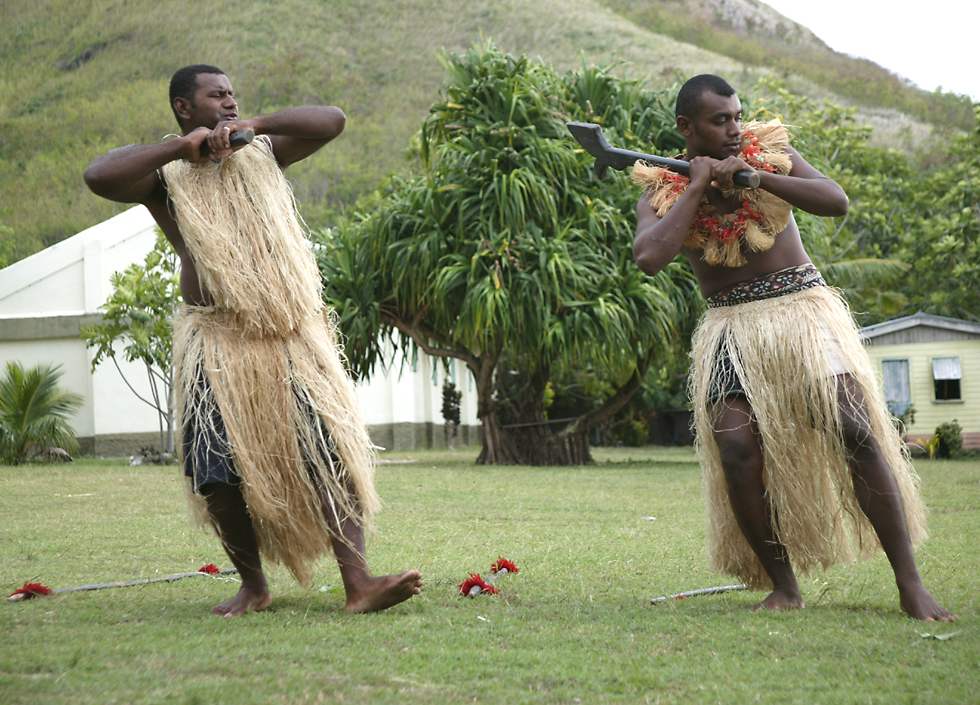 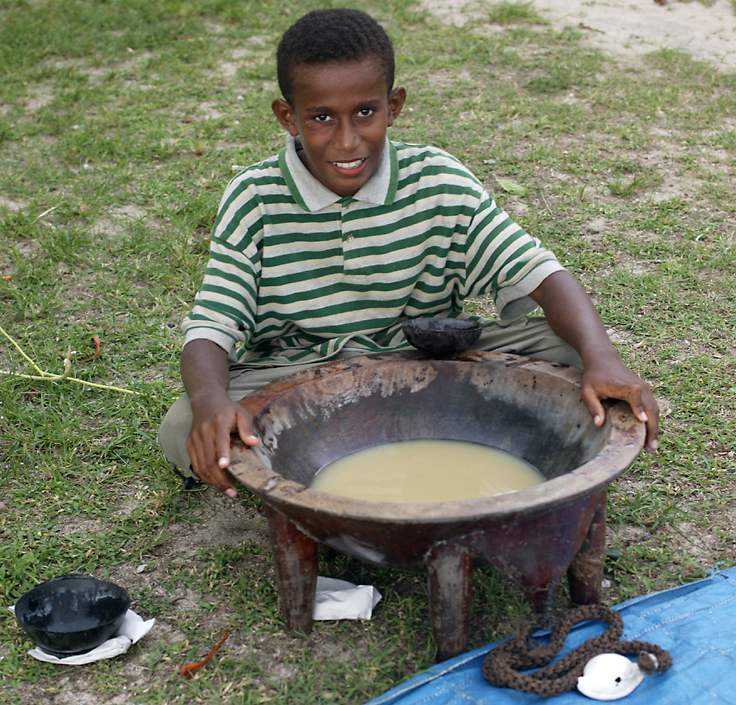 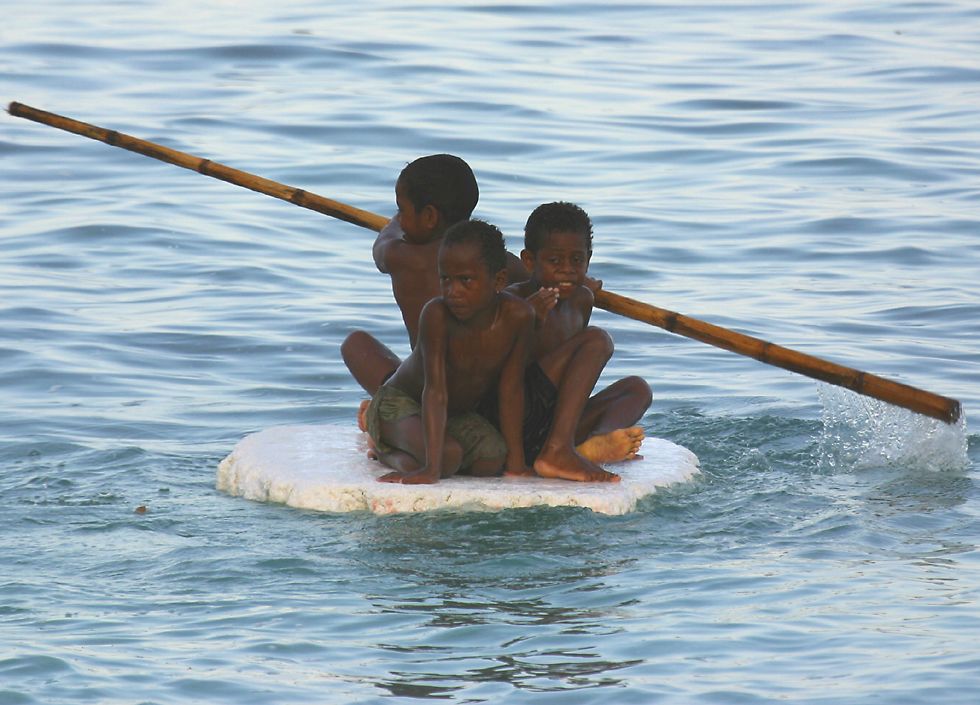 www.richard-seaman.com/Travel/Fiji/Highlights/index.html www.richard-seaman.com/Travel/Fiji/Highlights/index.html |
|
|
|
Post by nebsen on Nov 27, 2010 18:47:51 GMT -5
Anansi, so what are you thoughts, & feeling about this subject, with all the current information you have at hand?  |
|
|
|
Post by anansi on Nov 27, 2010 22:45:28 GMT -5
Anansi, so what are you thoughts, & feeling about this subject, with all the current information you have at hand?  Nesben being that I traveled to some of those lands and talked to some of those folks I have been received as family most have a genuine interest in the Blackman of the West and for them that includes Africans,those who I met here in Japan students usually are kind of disappointed that the Black folks of the West knows next to nothing about them,I told them that some of us are rediscovering ourselves Ie, our African connections and some extend that search into Asia it self, but they can help by being more pro-active by making links to the Black folks of the West in telling their stories and experience. We have much to learn from each other,until the era of genetics the assumption was we were closely linked that turned out not to be the case but we do share other things in common like I stated above our history of colonialism,shadism,slavery and the resistance to all the above all based on our common blackness after-all New Guinea is not called "NEW-GUINEA" for no reason. |
|
|
|
Post by nebsen on Nov 28, 2010 4:44:31 GMT -5
Anansi, Thinks for your insights. Like you stated we do share a lots in common even as it stands at this time not in genetics. I still have a nagging suspicion that their is more to this genetic piece that has not been reviled or will at some point be, in the 21 century. I saw earlier this year on the Tavis Smily Show, a Geneticist who was talking to Tavis Smily about the Genome Project, & the newest information that they have uncovered . In his talk he left out( too my mind) a very important piece about Africa. Was it on purpose or did he feel that the audience would not be up on it, & not catch his omission ?Which I did ! I was very pissed off that he felt he could leave that information about Africa out of the picture & I was more upset with Tavis for nor calling him on it, (which I'm sure he knew better). I was so upset I started to write Mr. Smiley an email about his guest who was an Euro American geneticist & his blantant omission. I'm saying all this to say, that even geneticist like racist historians are not above leaving out important pieces of information due to their bias & entrenched white supremacy that is still present in academia. Also they could find new information to refute what they pervious thought true, or fact, as time goes on. I'm not going too close the book just yet about Melanesia & their oral history & folk lore that connects them to Africa. Like the old saying go's, "were there's smoke there is fire." !  |
|
|
|
Post by anansi on Feb 20, 2011 0:33:38 GMT -5
In honor of the Little Black People The Saisiyat tribe of Hsinchu and Miaoli will perform a solemn rite this weekend to commemorate a race of people that they exterminated 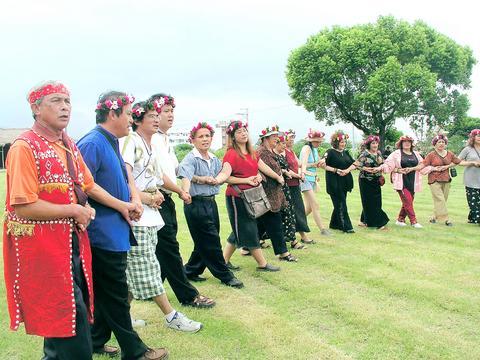 By Jules Quartly / STAFF REPORTER Xiangtian Lake is one of two places to see the ritual. PHOTO: TAIPEI TIMES 1 2 3 Drinking, singing and dancing are expected to take place deep in the mountains of Miaoli and Hsinchu when the "Ritual of the Little Black People" (矮靈祭) is performed by the Saisiyat tribe once again this weekend. For the past 100 years or so, the Saisiyat tribe (賽夏族) has performed the songs and rites of the festival to bring good harvests, ward off bad luck and keep alive the spirit of a race of people who are said to have preceded all others in Taiwan. In fact, the short, black men the festival celebrates are one of the most ancient types of modern humans on this planet and their kin still survive in Asia today. They are said to be diminutive Africoids and are variously called Pygmies, Negritos and Aeta. They are found in the Philippines, northern Malaysia, Thailand, Sumatra in Indonesia and other places. Chinese historians called them "black dwarfs" in the Three Kingdoms period (AD 220 to AD 280) and they were still to be found in China during the Qing dynasty (1644 to 1911). In Taiwan they were called the "Little Black People" and, apart from being diminutive, they were also said to be broad-nosed and dark-skinned with curly hair. After the Little Black People -- and well before waves of Han migrations after 1600 -- came the Aboriginal tribes, who are part of the Austronesian race. They are thought to have come from the Malay Archipelago 6,000 years ago at the earliest and around 1,000 years ago at the latest, though theories on Aborigine migration to Taiwan are still hotly debated. Gradually the Little Black People became scarcer, until a point about 100 years ago, when there was just a small group living near the Saisiyat tribe. The story goes that the Little Black People taught the Saisiyat to farm by providing seeds and they used to party together. But one day, the Little Black People sexually harassed some Aboriginal women. So, the Saisiyat took revenge and killed them off by cutting a bridge over which they were all crossing. Just two Little Black People survived. Before departing eastward, they taught the Saisiyat about their culture and passed down some of their songs, saying if they did not remember their people they would be cursed and their crops would fail. The Saisiyat kept their promise and have held the Ritual of the Little Black People every year, though they scaled down the ceremonies during the Japanese colonial period (1895 to 1945). Now the ritual is held every two years on the 10th full moon of the lunar calendar, with a big festival once every 10 years. At this time, the Saisiyat are not supposed to fight and they congregate in their ancestral areas of Miaoli and Hsinchu, in the mountains. "I've seen it written of as a celebration, but to me it seemed quite a mournful affair, especially in the way the music came across, which was trancelike, a haunting kind of chant with a series of 10 to 15 songs," said long-term Taiwan resident Lynn Miles, who has been to the ritual three times and will be going again this year. "There's nothing else quite like it in its tone and in its mood. I've been to other festivals but this is non-stop." Miles said the dances were not set pieces but usually involved holding hands and moving around in a circle, chanting, with those who know the songs doing most of the singing and a shaman figure keeping order. A spokeswoman at the Council of Indigenous Peoples (under the Executive Yuan) said that those who have "unclean thoughts" have their souls snatched by the spirits of the Little Black People and will pass out until the shaman revives them. Miles said the shaman seemed to serve a public-order function by chasing off those who were too drunk or out of order. The ceremonies are held in two places. The ritual began yesterday in Nanchuang Township, Miaoli County, and will carry on there until Monday. Rituals start today in Wufeng Township, Hsinchu County, and will last through tomorrow. www.taipeitimes.com/News/feat/archives/2004/11/27/2003212815 |
|
|
|
Post by nebsen on Feb 20, 2011 20:38:54 GMT -5
Anansi,
Very good article. I take that these little black people were some of the out of Africa migrations that entered Asia. Runoko Rashidi states on the back cover of his "Africans In Early Asia" "The story continues with the first modern human populations ( Homo sapiens sapiens) the Diminutive Blacks, who traveled & sojourned from one corner of Asia to the other, beginning perhaps 90,000 years ago."
The diminutive Blacks were followed by other of slightly larger bodily proportions & further distinguished by straight to wavy hair textures. Variously called Austrics , Austro- Asiatics, Mons, Mundas, Kolarians, & Veddas, these people were probably at their zenith 25,000 years ago, & are still prevalent in large numbers throughout Asia.
I see a lots of simular thems in the article & what Runoko Rashidi has wrote in his book.
|
|
|
|
Post by anansi on Feb 21, 2011 7:49:20 GMT -5
Anansi, Very good article. I take that these little black people were some of the out of Africa migrations that entered Asia. Runoko Rashidi states on the back cover of his "Africans In Early Asia" "The story continues with the first modern human populations ( Homo sapiens sapiens) the Diminutive Blacks, who traveled & sojourned from one corner of Asia to the other, beginning perhaps 90,000 years ago." The diminutive Blacks were followed by other of slightly larger bodily proportions & further distinguished by straight to wavy hair textures. Variously called Austrics , Austro- Asiatics, Mons, Mundas, Kolarians, & Veddas, these people were probably at their zenith 25,000 years ago, & are still prevalent in large numbers throughout Asia. I see a lots of simular thems in the article & what Runoko Rashidi has wrote in his book. Yeah they were part of that OAA folks that kept their features intact I guess I have the book the African presence in Early Asia I sometimes draw a lot from that . |
|
|
|
Post by truthteacher2007 on Feb 22, 2011 0:07:15 GMT -5
Anansi, Very good article. I take that these little black people were some of the out of Africa migrations that entered Asia. Runoko Rashidi states on the back cover of his "Africans In Early Asia" "The story continues with the first modern human populations ( Homo sapiens sapiens) the Diminutive Blacks, who traveled & sojourned from one corner of Asia to the other, beginning perhaps 90,000 years ago." The diminutive Blacks were followed by other of slightly larger bodily proportions & further distinguished by straight to wavy hair textures. Variously called Austrics , Austro- Asiatics, Mons, Mundas, Kolarians, & Veddas, these people were probably at their zenith 25,000 years ago, & are still prevalent in large numbers throughout Asia. I see a lots of simular thems in the article & what Runoko Rashidi has wrote in his book. Yeah they were part of that OAA folks that kept their features intact I guess I have the book the African presence in Early Asia I sometimes draw a lot from that . Or they could have reverted back to tropical traits because they ended up in the same climate zone again. Function follows form. I personally think that they must have been descended from peoples who hugged the southern fringes in their migration and therefore retained their tropical features. But then again, they don't all look alike, nor do they really look like Africans. They are have very distinct sets of features. Andamans don't look like Papuans and neither look like Aboriginals. Very interesting. The closer you look, the more questions you find. |
|
|
|
Post by nebsen on Feb 22, 2011 20:23:33 GMT -5
www.youtube.com/watch?v=sUMJMk7U3skI'm not well versed in DNA like some on this forum, but I did find this video on You -Tube on the migration from out of Africa to other lands that are now Asian populations. This video I think can add to the information on topic of Black Asians by tracking the OOA migrations from a DNA perspective. So please feel free to analyze & interpret the information in this video to the rest of us, less versed in DNA.
|
|










